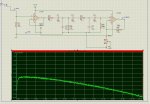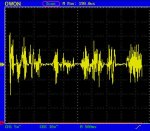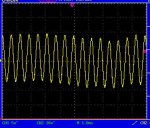Hi,
I am thinking of logging the sound level from a microphone.
The idea is to put a specialised chip between the microphone and the Picaxe.
The chip should be able to:
1) interface with the microphone
2) apply a weighting curve (for example A weighting to get the DbA value)
3) send out the measured noise level in a convenient format, i.e. serial, i2c or other for the Picaxe to receive and log.
Do these chips exist?
I need some initial advice to help pointing my internet searches in the right direction.
thanks in advance
Riccardo
I am thinking of logging the sound level from a microphone.
The idea is to put a specialised chip between the microphone and the Picaxe.
The chip should be able to:
1) interface with the microphone
2) apply a weighting curve (for example A weighting to get the DbA value)
3) send out the measured noise level in a convenient format, i.e. serial, i2c or other for the Picaxe to receive and log.
Do these chips exist?
I need some initial advice to help pointing my internet searches in the right direction.
thanks in advance
Riccardo




